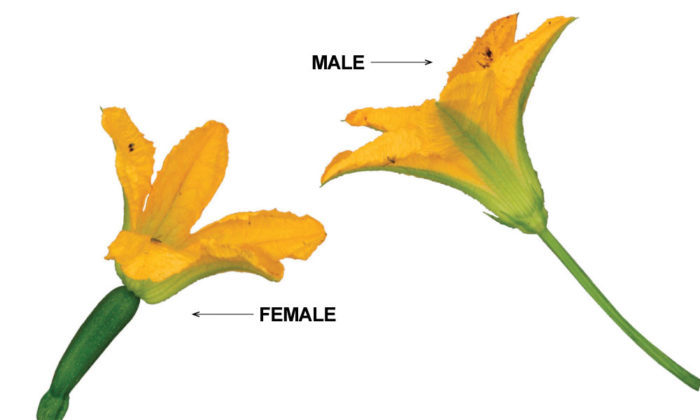
Procreation in the garden is pretty simple. The pollen from a flower’s stamen has to find the ovary (pistil) in another—or sometimes the same—flower; the plant is now pollinated, and fruit and seed will form. So how can we make sure that our veggie plants become pollinated and, therefore, bear fruit?
The plants are certainly doing their part. Flowers have evolved, over time, to attract pollinating insects, primarily through color and scent, and those insects do the job of transporting pollen from flower to flower. Most of the time, nature’s plan works perfectly—except for when it doesn’t. Sometimes the insects don’t hold up their end of the bargain. Perhaps an overuse of chemicals has killed off much of the local population of insect pollinators. Sometimes it’s the weather or just plain old bad timing that prevents our plants from producing well.
Hand pollinating is a simple technique that comes in handy at times like these. But you can also use it before you have a problem—a preemptive strike, if you will. This technique is especially helpful with veggies like pumpkins, melons, cucumbers, and zucchinis, which bear two types of flowers: male blossoms (which carry pollen) and female blossoms (which house the ovary). Plan to pollinate once you notice that the female flowers are beginning to open. Then follow this simple step-by-step approach.
Step 1: Find the male and female flowers
Female flowers are easy to identify because they have a small fruit—or, more accurately, a potential fruit—that sits just behind the blossom. Oftentimes, gardeners spot this small undeveloped fruit and mistake it for a baby fruit, thinking that it’s already been pollinated and will undoubtedly mature. When the fruit shrivels up and dies, it’s easy to question where you went wrong or what you might have done to cause its untimely demise. But the truth is that the flower was never pollinated to begin with. You’ll recognize the male flowers because they lack any immature fruit.
Step 2: Harvest a male flower
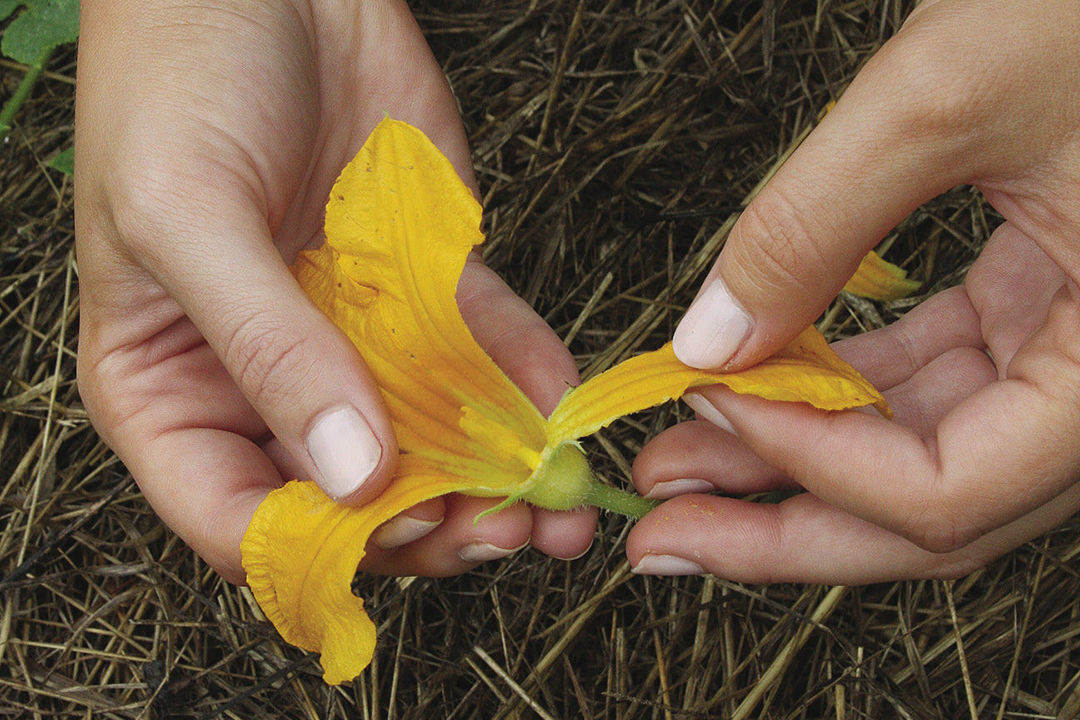
Find a male flower, and gently pluck it off at the middle of the stem that connects the flower to the main vine. Look for one that’s beginning to blossom but hasn’t opened fully just yet. Peel back and remove the petals from the male flower, exposing the pollen-bearing stamen.
Step 3: Transfer pollen to the female flower
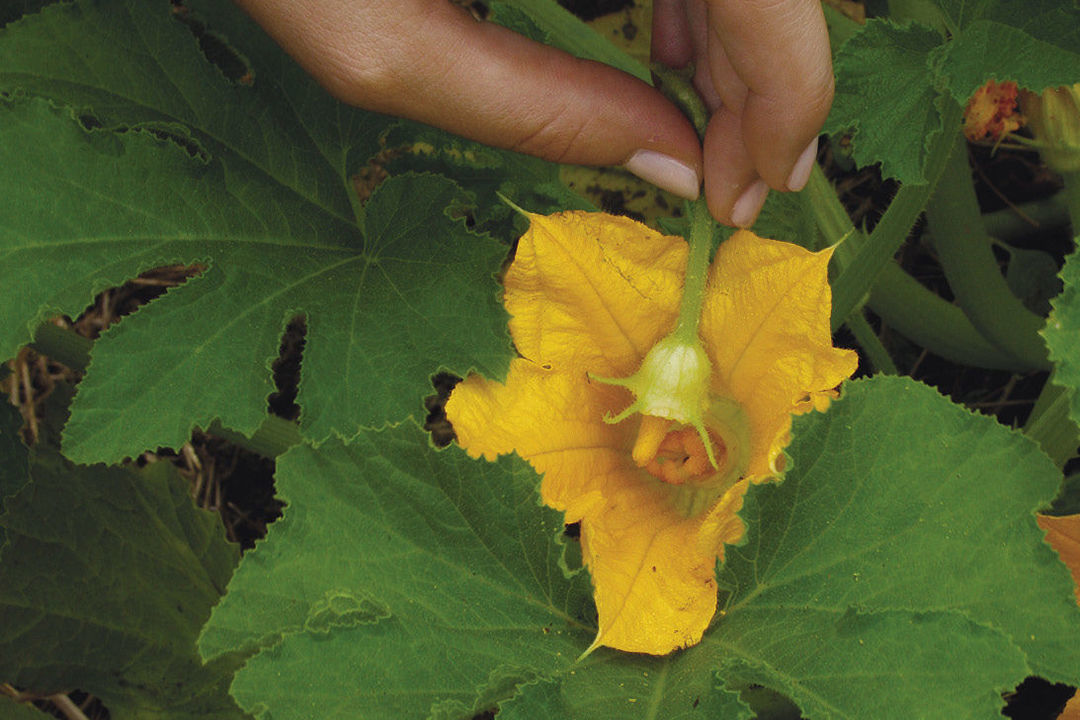
Choose a female flower that’s just beginning to open on the vine. Hold the female petals open, but don’t remove them. Take your male flower and rub the stamen (male parts) all over the top of the pistil (female parts) of the female flower. Do this gently, as you don’t want to break anything off of the female flower.
Step 4: Mark each pollinated flower
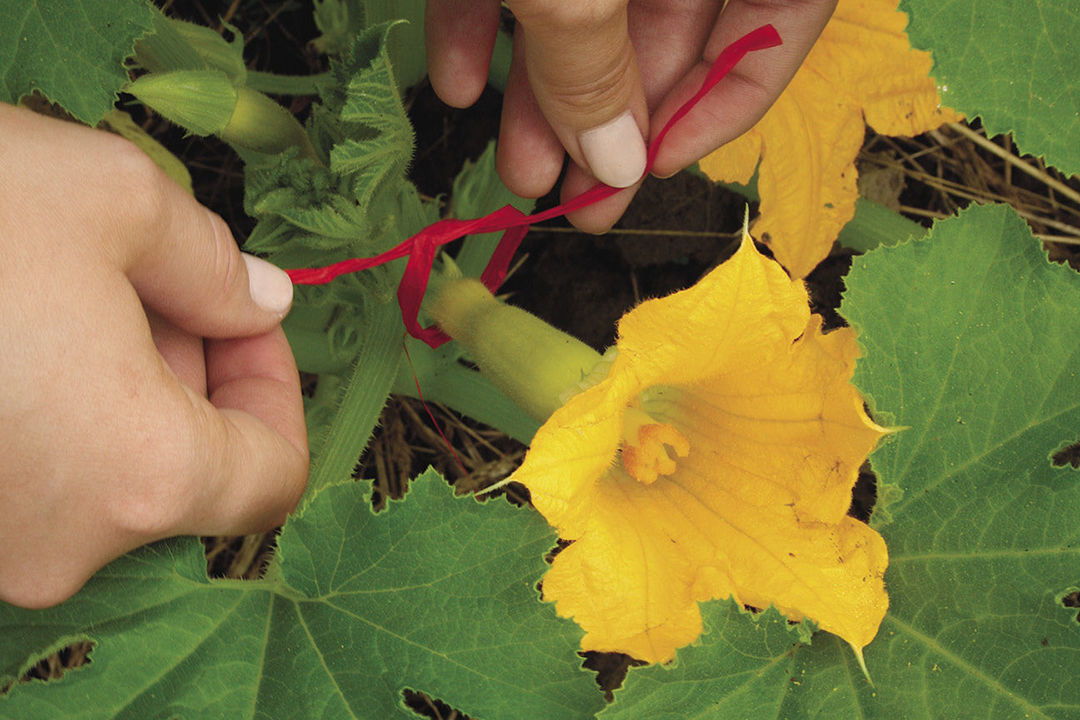
If you’re interested in keeping insects from cross-pollinating plant varieties because you’re saving seeds, then close the female’s petals around the pistil; use a small rubber band or masking tape to keep the petals closed. If you just want to keep track of the female flowers you’ve pollinated each day, mark them by tying a string or ribbon loosely around their stems.
Tip: Help self-pollinators along too
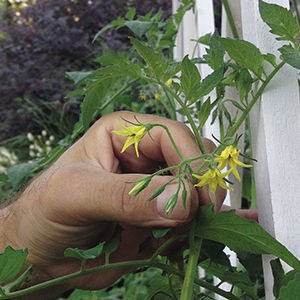
Tomatoes, peppers, beans, and eggplants have flowers that are referred to as “perfect,” meaning both male and female parts are combined in one blossom. These flowers usually pollinate themselves effectively, provided that they are jostled by wind or visited by active insects. But even these self-sufficient plants can use a little help once in a while. All you have to do is, from time to time, grasp a flowering branch with your thumb and forefinger and give it a little shake or gently tap it as you walk by.
10 plants that attract natural pollinators
Let’s face it: What we really want in our gardens are more natural pollinators. Below are some insect-enticing plants that are sure to bring all the bees to your yard.

Yarrow
Achillea spp. and cvs.
USDA Hardiness Zones 3–9
A summer- to fall-blooming perennial, yarrow is available in hundreds of varieties.
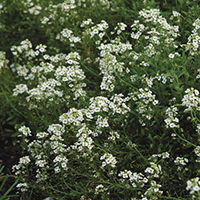
Sweet alyssum
Lobularia maritima and cvs.
Annual
Sweet alyssum blooms from early spring through the end of fall. Count on this little annual to reseed.
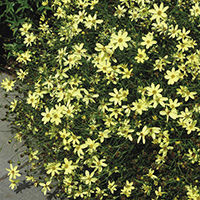
Coreopsis
Coreopsis spp. and cvs.
Zones 4–9
Coreopsis, a late spring– to midsummer-blooming perennial, blossoms primarily in shades of gold.

Purple coneflower
Echinacea purpurea and cvs.
Zones 3–9
A midsummer- to midfall-blooming perennial, purple coneflower is trouble-free and drought tolerant. What’s not to love?
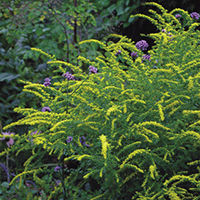
Goldenrod
Solidago spp. and cvs.
Zones 5–9
Goldenrod’s late summer– through early fall–blooming clustered flowers on long stems will remind you of shooting stars.
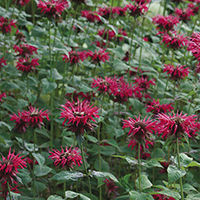
Bee balm
Monarda spp. and cvs.
Zones 4–9
Bee balm adds interest with its late spring– to midsummer-blooming, shaggy-headed flowers.

Thyme
Thymus vulgaris and cvs.
Zones 4–9
A hardy herb that blooms from midspring through early summer, thyme is welcome in both the garden and the kitchen.
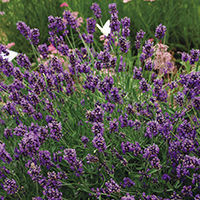
Lavender
Lavendula spp. and cvs.
Zones 5–9
Lavender, a midsummer- to early fall–blooming perennial herb, tolerates a wide variety of conditions, making it one of the must-haves of the herb garden.
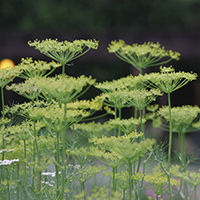
Dill
Anethum graveolens
Annual
Dill is a midsummer-blooming annual. Harvest both its seeds and leaves to use in culinary dishes.
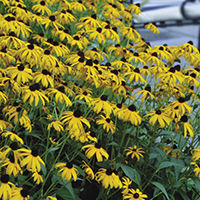
Black-eyed Susan
Rudbeckia spp. and cvs.
Zones 3–11
A late spring– to midfall-blooming annual, biennial, or perennial, black-eyed Susan is care-free and easy to grow.
Chris McLaughlin is a master gardener and garden designer in Placerville, California, and the author of Vertical Vegetable Gardening.
Photos, except where noted: Michelle Gervais; (goldenrod), Jennifer Benner
Fine Gardening Recommended Products
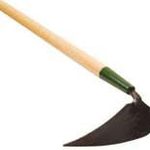
Long Handle EZ-Digger
Fine Gardening receives a commission for items purchased through links on this site, including Amazon Associates and other affiliate advertising programs.

Corona E-Grip Trowel
Fine Gardening receives a commission for items purchased through links on this site, including Amazon Associates and other affiliate advertising programs.

Spear & Jackson 4930FZ Razorsharp Telescopic Tree Pruner
Fine Gardening receives a commission for items purchased through links on this site, including Amazon Associates and other affiliate advertising programs.




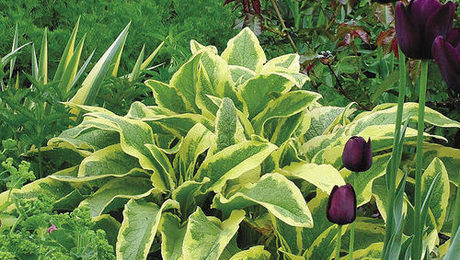














Comments
Log in or create an account to post a comment.
Sign up Log in